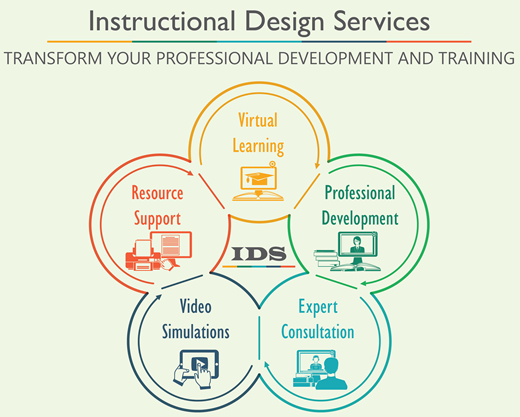Who We Are
We are a team of highly skilled instructional designers (IDs) who use technology and multimedia as tools to enhance instruction. We incorporate a process by which instruction is improved through the analysis of learning needs and a systematic development of learning materials, activities, information resources, and evaluation. We engage in learning theory and research-based processes of designing and implementing instruction to increase learning. As skilled instructional designers, we are not the subject matter experts (SMEs), but rather, we collaborate with the experts to create learning environments where learners can participate in rich, meaningful learning experiences both face to face and online.
In addition to our expertise in instructional design theory and practice, we are highly qualified educators. As such, we incorporate a specific instructional design model to structure content and organize the learning process into meaningful events in order to increase knowledge retention and application. Examples of instructional design models include: ADDIE, SAM, and ASSURE. The specific model selected by the instructional designer depends on the purpose, objectives, learner needs, and the content being delivered. Instructional design models are frameworks for developing learning events that:
- increase and/or enhance the possibility of learning, and
- encourage the engagement of learners so that knowledge retention is increased and learners acquire deeper levels of understanding.
Products developed and designed by our instructional designers meet Section 508 Standards as required by the Federal Acquisition Regulation (FAR) in compliance with the Rehabilitation Act of 1973 (29 U.S.C. 794d) and address access for people with physical, sensory, or cognitive disabilities.
In addition, our products adhere to Copyright and Fair Use Guidelines, and incorporate universal design processes, principles, and applications.


